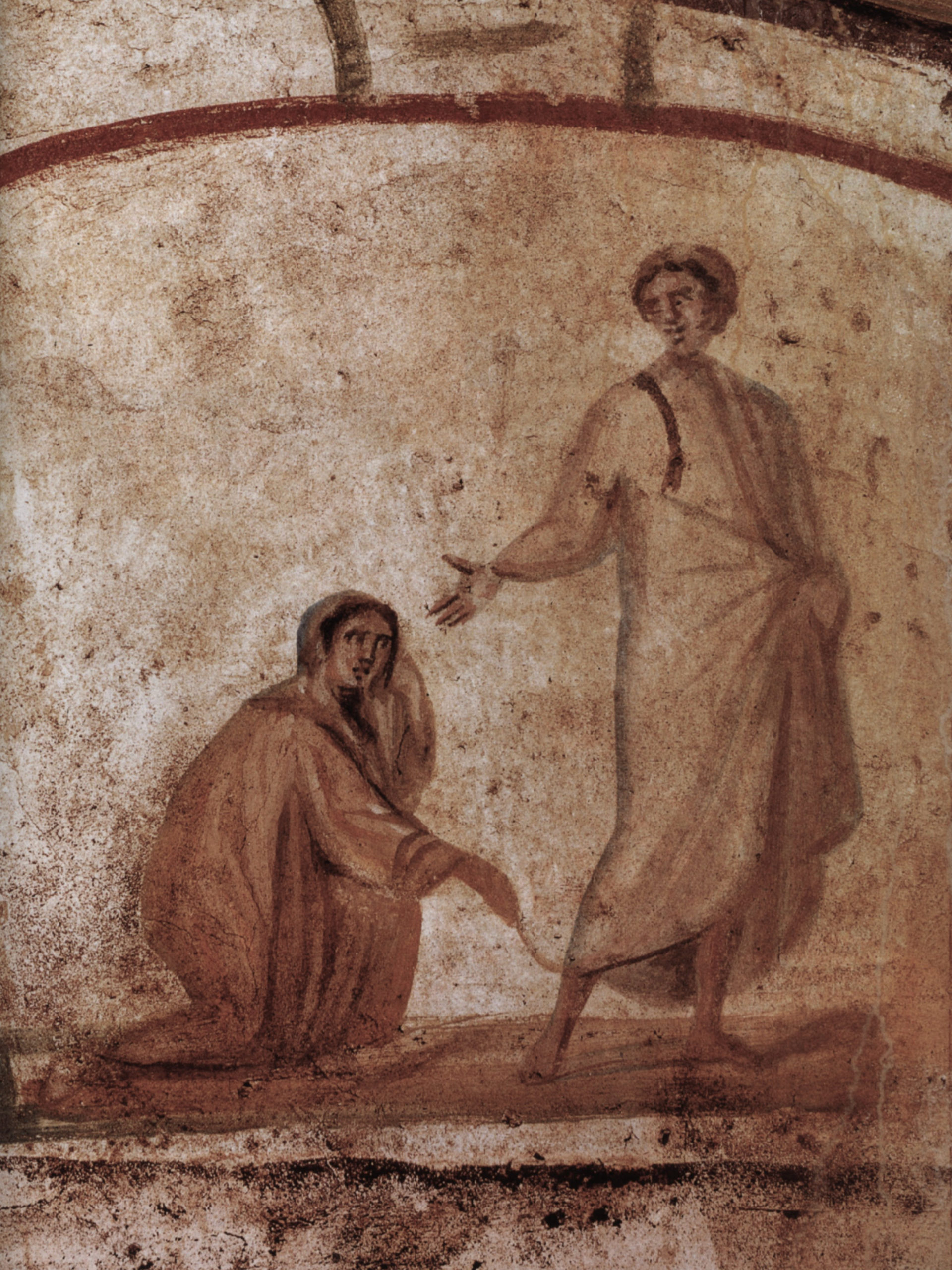“But his disciples said to Jesus, ‘You see how the crowd is pressing upon you, and yet you ask, “Who touched me?”’” (Mk 5:31) One sympathizes with the disciples. Our Lord’s question seems unreasonable. He’s a celebrity, after all. The entire town and countryside turn out to see Him. They want to be close to Him, maybe out of devotion, but just as likely out of a desire to say that they saw Him. There’s the inevitable jostling of the crowd and many people probably bumped into Him.
But one person touches Him differently. The woman with the hemorrhage reaches out to touch His cloak intentionally, with faith. Many people just happen to bump into Him. Only one touches Him. This contrast provides a way to consider a tension we’re experiencing now, between a cultural and an intentional Catholicism.
Catholicism requires a culture. Or rather, it forms a culture for its own continuation. The Catholic faith is not a hobby that we can relegate to one area of our lives. It is a way of life – indeed, the Way, as the ancient Church called it. (Acts 9:2) It should shape every aspect of the believer’s life: thoughts, words, actions, and relationships. It is lived by heart, mind, soul, and body. It takes up our time with its seasons and feasts. It fills up our space with its art and architecture.
A culture properly imbued by Catholic doctrine hands on the faith more easily. We’re not meant to learn the faith only in a classroom or by books. We learn it from our parents and grandparents, as well as by way of songs, sights, and smells. With so many helps around him, a person can embrace and interiorize the faith more naturally, peacefully, and thoroughly. Thus, a Catholic culture produces such extraordinary and diverse saints as Thomas Aquinas, Charles Borromeo, and Teresa of Avila. We should strive to build such a culture.

At the same time, the danger of a Catholic culture should be painfully obvious. If not properly tended, it becomes merely cultural Catholicism. That counterfeit has produced many people who have grown up with the trappings and in the atmosphere of Catholicism, who indeed claim to be Catholic (perhaps even “devout”), but who are far from the actual faith. Cultural Catholics often preface their words of dissent with, “I went to twelve years of Catholic school.”
These accidental Catholics are like the crowd surrounding Jesus. They bump into Him on occasion, as a result of being in the same place. They allow the trappings to substitute for the personal investment. They don’t actually touch Him in faith. Our Lord Himself warned of such superficial contact: “And you will say, ‘We ate and drank in your company and you taught in our streets.’ Then he will say to you, ‘I do not know where [you] are from. Depart from me, all you evildoers!’” (Lk 13:26)
In response to cultural Catholicism’s danger, we now talk about being “intentional” and forming “intentional disciples.” The desire is to produce Catholics who don’t just bump into our Lord but touch Him out of faith.
This is desperately needed. The external supports that a Catholic culture would provide for the soul are gone. Sure, a parish should try to build a Catholic culture. But that’s still a small thing against the tsunami of our toxic culture. For a long time now, it has been foolish to presume that, in our secular society, Catholic trappings could lead to a vibrant Catholic faith. Now, just to survive, Catholics must be intentional and deliberate in professing and living their faith.
But this intentionality has drawbacks as well. An “intentional community” can quickly become gnostic and cliquish. Or a country club. Too much or the wrong emphasis on intentionality can lead to the mindset that we have chosen Him. It can obscure the power of His words: “It was not you who chose me, but I who chose you.” (Jn 15:16) Our intentional choice is simply a response to His initiative. We choose because we’ve first been chosen.
A great defense against this danger is the Catholic parish, which (with few exceptions) is geographical, not intentional. Indeed, a “destination parish” – although necessary is some places – is an oxymoron. One of the beautiful things about a Catholic parish is the cross-section of people it draws. On any given Sunday, the faithful are gathered not owing to any shared hobby or worldly interest but because they are all sinners who have found redemption in Christ’s Church. They are otherwise not a group of people who would be found together.
James Joyce’s famous definition of Catholicism – “Here comes everybody” – is found in every parish. The faithful – of whatever degree – are at a parish not so much because they have chosen it, but because God, in His Providence, has plopped them in its boundaries. They are responding to that reality.
Of course, some parishioners are less intentional than others. We don’t for that reason drive out or exclude them. Instead, we hope that authentic Catholic doctrine, devotion, liturgy – in a word, culture – will draw them closer to the center of the parish and to the heart of the Church.
Thus, the solution is (as one would expect) both a cultural and an intentional Catholicism. That is, to cultivate a vibrant Catholic culture that does not substitute for the personal investment but fosters that intentional commitment to Christ.
*Image: The Woman with the Hemorrhage by an unknown artist, 4th century [Catacombs of Marcellinus and Peter, Rome]














